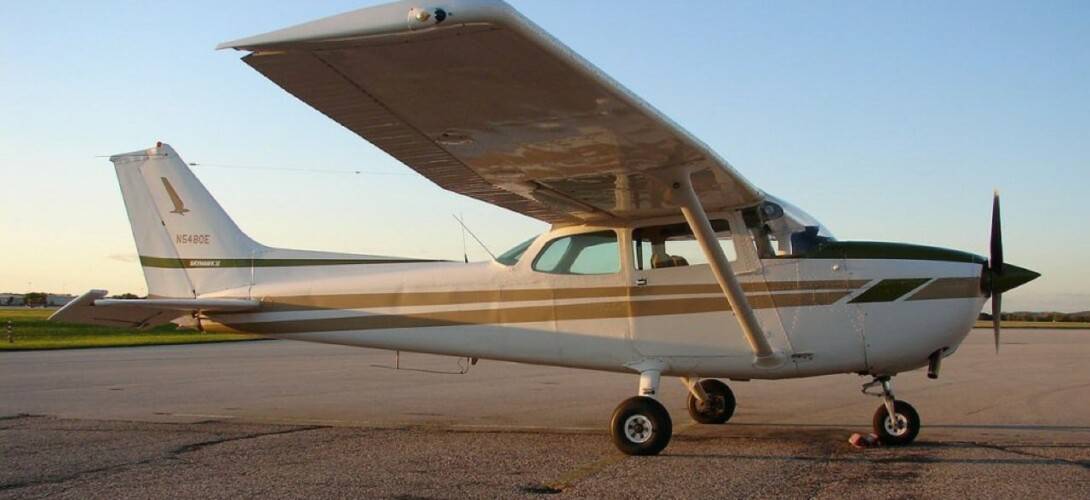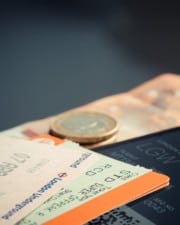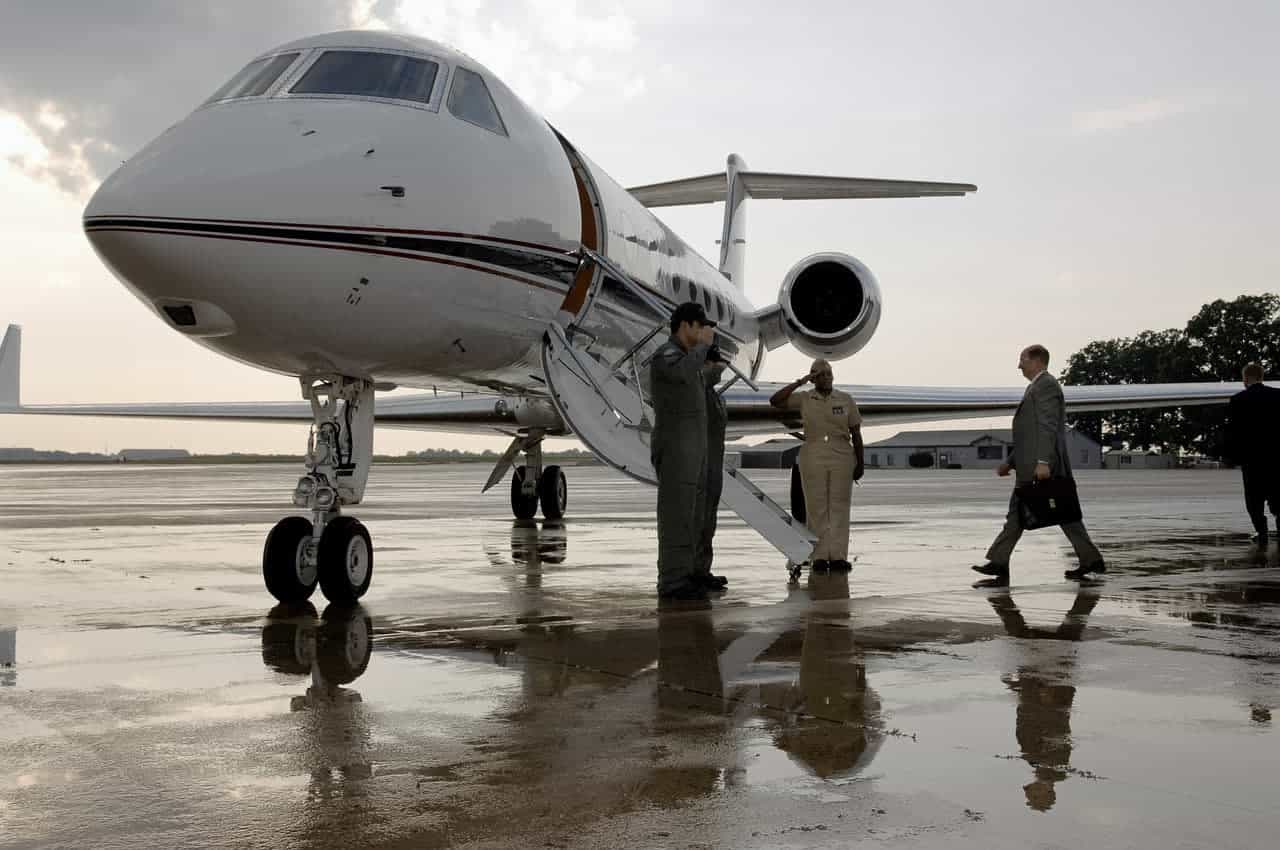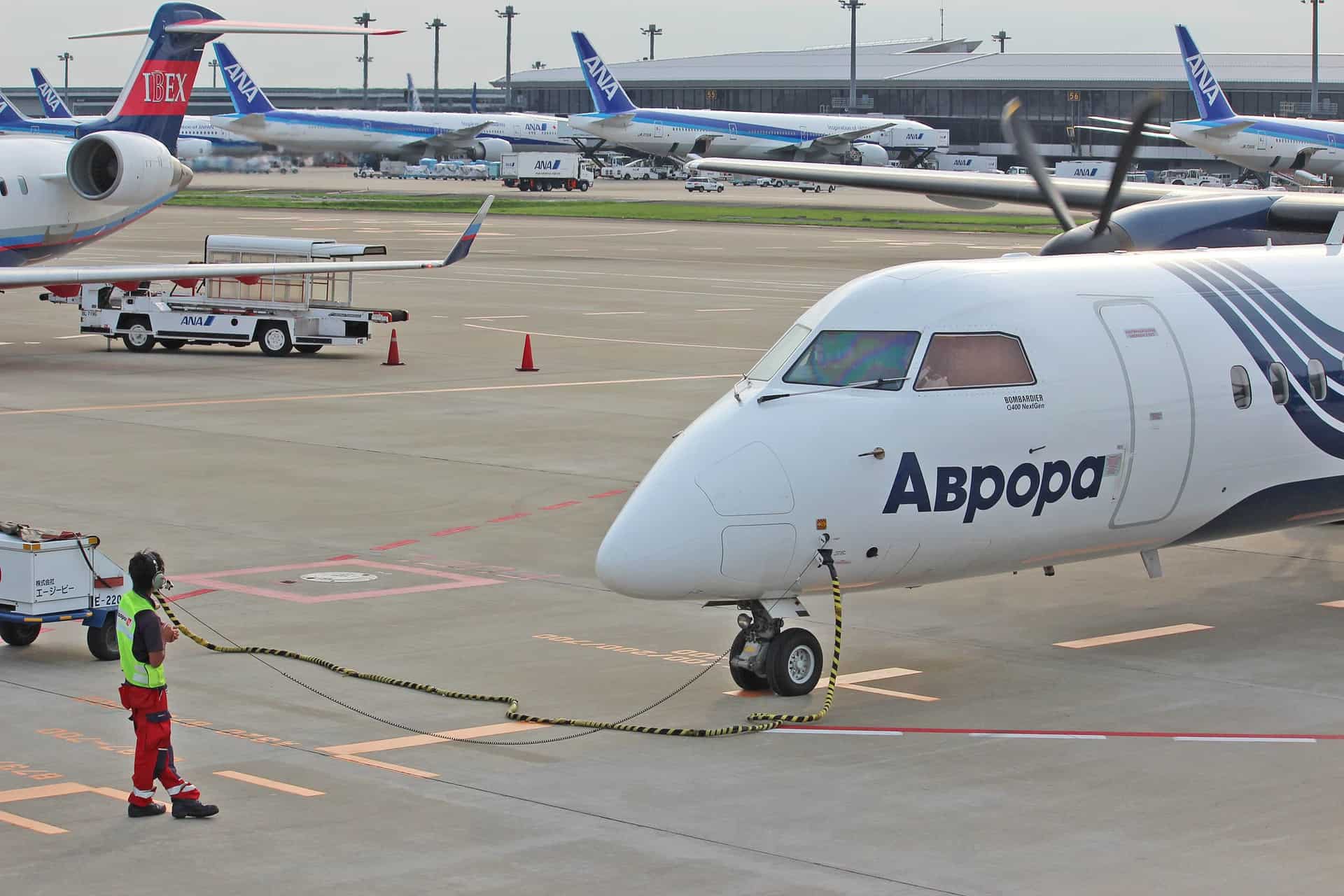Safety should be at the forefront of every pilot’s mind when considering aircraft training options. The aircraft chosen for training will impact the learning experience and skill development necessary to become a safe pilot.
Whether you want to pursue aviation as a recreational hobby or are airline bound, the goal is to master the fundamentals to become a skilled and safe pilot.
As technology advances, there is a hot debate among pilots and aviation enthusiasts surrounding the idea of traditional stick and rudder skills versus automation. No matter where you stand, this article will cover a comprehensive list of training aircraft. Let’s get into it!
Table of Contents
1. Cessna 172

With over 43,500 aircraft distributed, the Cessna 172 is the most popular single-engine aircraft ever built. This bird can comfortably carry a maximum of 4 persons and has a cruise speed of 125 mph and a range of 675 miles.
These popular trainers are aerodynamically stable and forgiving airplanes with a tricycle landing gear. Many interesting characteristics make the C172 desirable for training pilots, such as good acceleration, ample visibility, and a slow landing speed.
With its wide range of capabilities, the Cessna 172 is offered in most flight schools.
Although many Cessna aircraft have older avionics, learning these instruments promotes mastery of the basic six-pack instrument panel, which is crucial foundational knowledge that can be applied as they advance in their piloting career.
2. Cessna 152
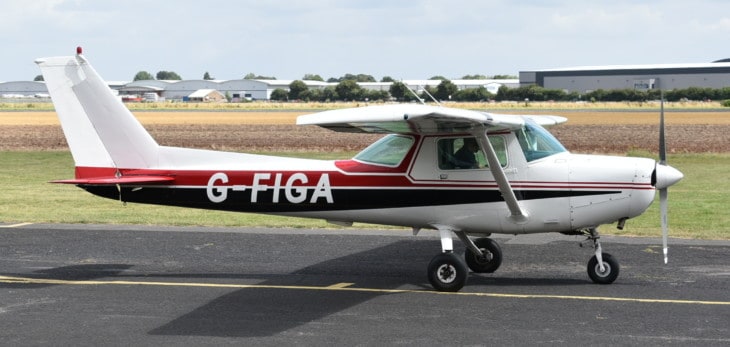
Built with training in mind, the Cessna 152 has been used in flight training for decades and is commonly referred to as the Skyhawk’s little sister. The Cessna 152 was released in 1978 to upgrade and replace the Cessna 150 (a model built in 1958).
This two-seat, single-engine, high-wing, fixed-tricycle gear airplane runs on a 110-horsepower piston engine with a fixed-pitch propeller. Flight schools love this aircraft as it is very cost-efficient and has a reliable Lycoming engine that can handle the constant stress of training.
This versatile and forgiving aircraft is excellent for student pilots because it is small and easy to maneuver with a smaller instrument panel ideal for training. The Cessna 152 allows student pilots to learn manual flying and build foundational stick and rudder skills.
Plus, there’s a reason it’s one of the most produced civil aircraft ever!
3. Piper J-3 Cub
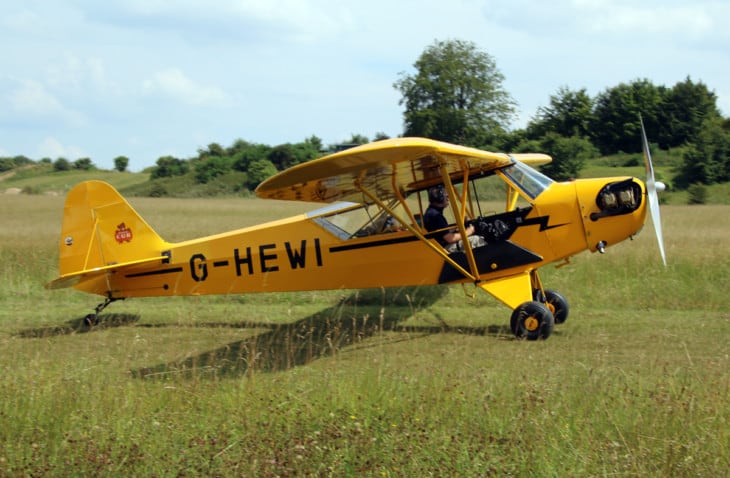
The Piper J-3 Cub is the airplane that taught the pilots of World War II to fly. This iconic airplane was designed as a trainer and is revered among aviators for being inexpensive and easy to fly.
It has a simple, lightweight design giving it good short-field performance and low-speed handling capabilities.
The J-3 Cub is fun to fly, although by no means is this a fast aircraft. Ideal for student pilots, it only cruises around 75 miles per hour and is intended to be flown low and slow, perfect for taking in the views.
Although most pilots learn on tricycle landing gear, training on a tailwheel requires constant pilot input and turn coordination to help produce a more skilled and well-rounded pilot.
It prompts proficiency with takeoffs, taxing, and landings because more use of the feet on the rudder pedals is required.
Once compared to the Ford Model T, this classic vintage aircraft promotes training and experience that will help create a versatile and well-rounded pilot.
4. Piper Arrow

Built by Piper Aircraft and designed for flight training, air taxi, and personal use, the Piper Arrow is simple and retractable to fly.
The PA-28 family of aircraft is all-metal, unpressurized, single-engine, piston-powered airplanes with low-mounted Hershey bar wings and tricycle landing gear.
Similar to another popular Piper training model, the Cherokee, the Arrow is slightly more advanced. With its larger 200-hp engine, retractable gear, and controllable pitch propeller, this aircraft is designed for students who want to master stick and rudder skills.
Pilots report that its more extensive, heavier motor and prop leads to more pitch stability and ease of flying. The Piper Arrow is the perfect model for preparing students for more complex aircraft.
5. American Champion Citabria
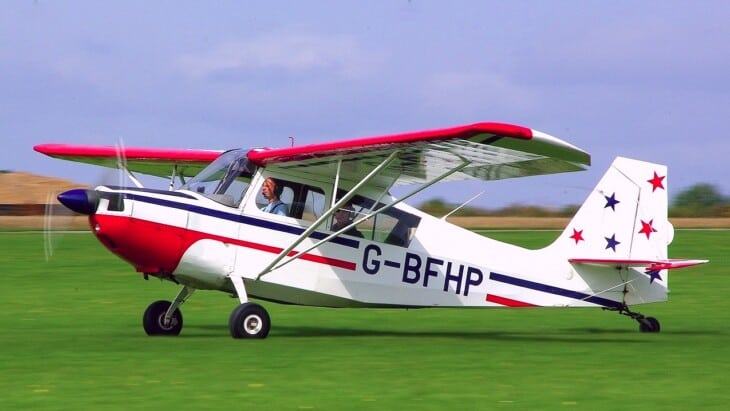
Citabria continues to be a popular choice as a training aircraft due to its conventional gear and aerobatic capabilities.
Designed for flight training, personal use, and utility when Citabria was first introduced, it was also the only airplane in the United States that was certified for aerobatics.
Similar to the J-3 Cub, this is yet another single-engine, tail-wheel aircraft with short field landing capabilities, great for teaching stick and rudder skills to pilots in training. The Citabria is inexpensive and has stable air and ground handling, making it an ideal aircraft for student pilots with low hours.
Although the power of this bird may be limited, the absence of inverted fuel and oil makes it the perfect aircraft for beginning aerobatic students. Look closely, and you’ll see that its name spelled backward is “Airbatic.”
6. Diamond DA-40 Diamond Star
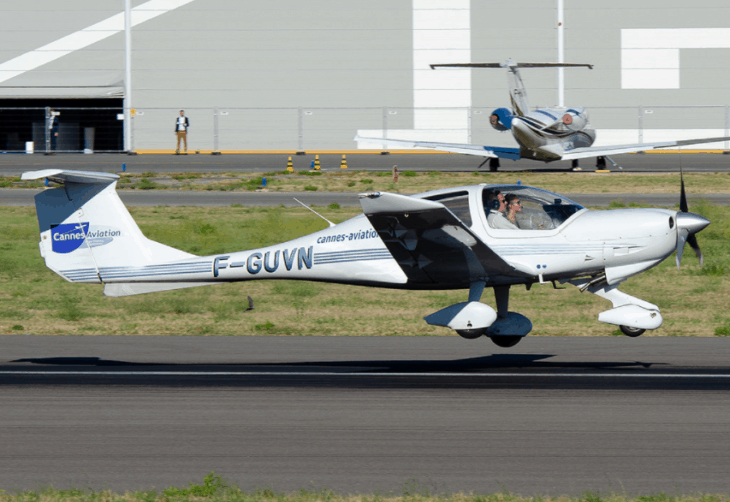
The stylish Diamond Star is a glass cockpit aircraft that is on every technocentric aviator’s radar. The DA-40 is a modern four-seat, light, single-engine aircraft built in both Canada and Austria by the Austrian Company Diamond Aircraft Industries.
This aircraft has brand new avionics and cruises as fast as 140 knots on 9 gallons per hour of fuel through a 180hp fuel-injected Lycoming engine.
Some of the most notable features that distinguish the DA-40 from its competitors include fuel efficiency, high airspeed, lower stall speeds, and all-electric instruments.
Diamond Aircraft Industries boasts about safety, but with good reason! Diamond has the best safety record of any aircraft in the air today, making it an optimal choice for training pilots.
The superb visibility, extremely forgiving handling and auto-pilot capabilities make this aircraft an ideal primary training aircraft.
7. Cirrus SR22

The Cirrus SR22 is a single-engine, fixed gear tricycle configuration, four to five-seat composite aircraft built in 2001 by Cirrus aircraft of Duluth, Minnesota. This 21st-century aircraft has a high fuel capacity, a powerful engine, and superb visibility.
The SR22 is a glass cockpit best seller, and with brand new avionics, it is very popular as a training aircraft.
The SR22 has gained the nickname “the plane with the parachute” because it is equipped with a whole-plane emergency recovery parachute system called the Cirrus Airframe Parachute System (CAPS). This system can lower the entire aircraft to the ground in the case of an emergency.
8. Piper Seminole

The Piper Seminole is one of the most recognized multi-engine trainers. Manufactured by Piper Aircraft, the Seminole was first built between 1979-1982. The Seminole has a semi-tapered wing with counter-rotating props, a T-tail, and a pair of Lycoming 0-360 engines.
This aircraft is found in many aviation schools across the country. The Seminole is a tried-and-true trainer; reliable, durable, easy to maintain, efficient, and cost-effective.
However, slightly more complex than a single-engine aircraft, the Seminole, known for its ability to perform strenuous movements safely, allows a smooth transition to multi-engine flying for student pilots.
With its forgiving nature, the popular Piper Seminole has trained generations of pilots.
9. Diamond DA-42 Twin Star

The Diamond DA-42 Twin Star is a solid glass cockpit option for twin engine training. This diesel-powered, fixed-wing, propeller-driven airplane has two engines allowing pilots to have a backup engine in case one of the engines fails in flight.
This aircraft burns an incredible 16 gallons per hour at maximum power.
The DA-42 is commonly used in general aviation for touring and training purposes, and pilots report ease in handling, stability, and control.
It typically accommodates four people in two rows of seating, complete with automotive-style three-point seat belts; all seats have been designed for crashworthiness.
The Twin Star provides a training experience similar to jet aircraft, featuring single-lever digital controls for each diesel engine. These controls enhance the DA-42’s stellar performance and safety features, providing excellent twin-engine training.
10. Beechcraft Baron 55

Produced by Beechcraft since the 1960s, the Baron 55 offers students an excellent multi-engine training experience. The Baron 55, also called the B55 or “baby Baron”, is known as the short body version of the Baron family.
This light twin has a retractable landing gear and cruises at a maximum speed of 380km/hr and has a range of 1,084 miles. The Baron 55 can occupy up to 5 passengers, is comfortable and has a reputation for quality.
Often leading its class in speed, the Baron 55 is well made, has good handling and is an excellent performer.
11. Beechcraft Duchess

Similar to the Seminole, the classic Beechcraft Duchess is regularly used as a multi-engine training aircraft. Instructors and operators praise the Duchess for its superb handling and smooth take-off and landing capabilities.
The Beechcraft Duchess has a performance on par with other twins. It has 140-knot cruise capabilities and 180 HP engines. Due to its vintage production between 1978 and 1983, parts for this aircraft can be hard to come by.
This T-tail aircraft is very stable and predictable with fast ailerons. The counter-rotating engine’s stall speed is reached well before VMC making the Duchess an easy trainer. Hourly operating costs in this aircraft are relatively low, and they can be purchased for under $100,000.
Related Posts
